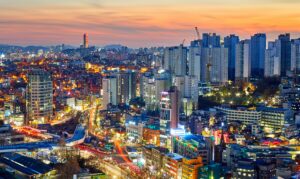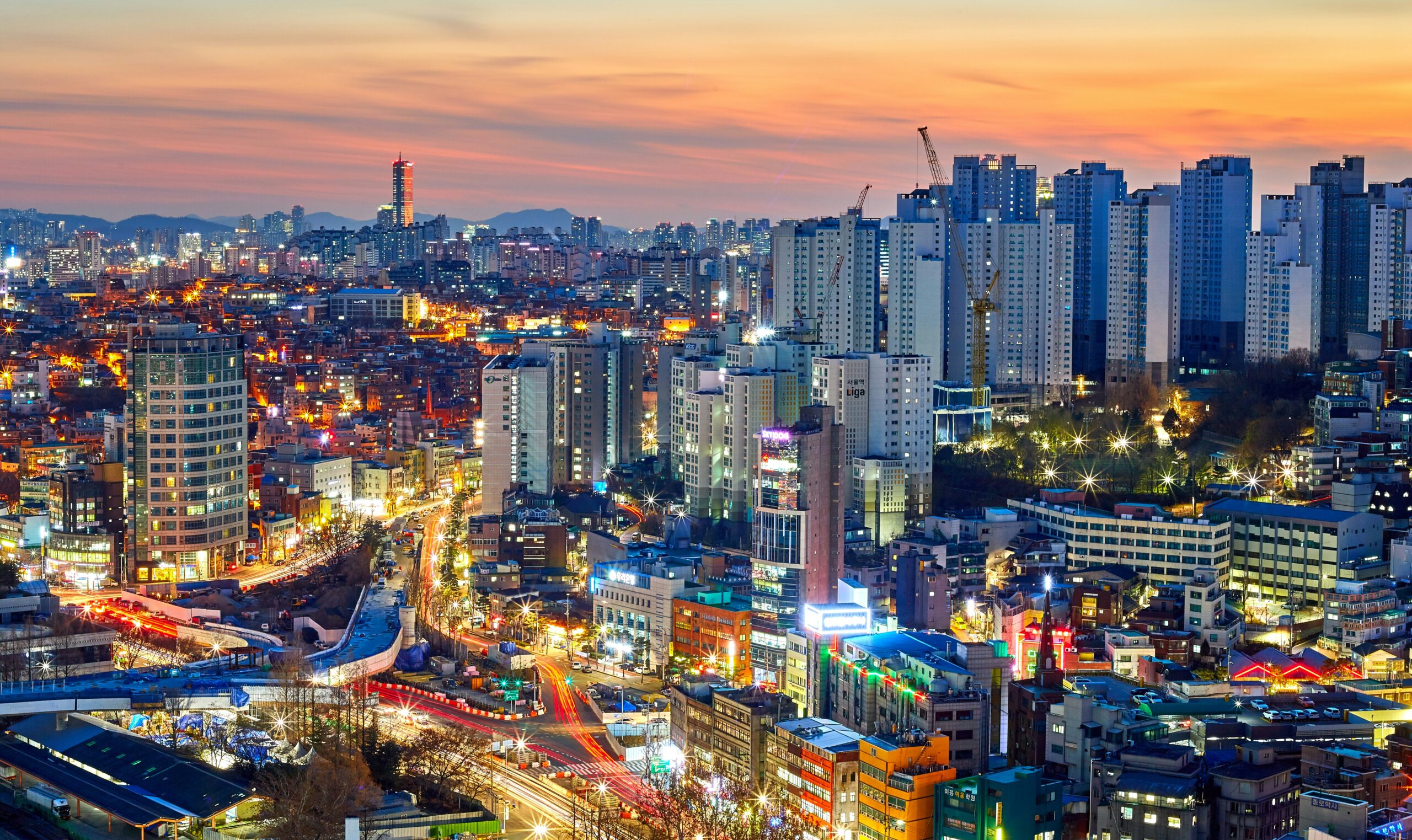South Korea
South Korea, officially known as the Republic of Korea (ROK), is a dynamic and highly developed country located on the southern half of the Korean Peninsula in East Asia. With a population of over 51 million people, it is renowned for its rapid economic development, rich cultural heritage, technological advancements, and significant influence on global pop culture. South Korea shares its only land border with North Korea and is surrounded by the Yellow Sea to the west, the Sea of Japan (East Sea) to the east, and the Korea Strait to the south.
Historical Background
South Korea’s history is marked by periods of remarkable cultural and political development as well as moments of intense conflict. The Korean Peninsula has been inhabited for thousands of years, with early civilizations such as the Gojoseon kingdom emerging around 2333 BCE. Over the centuries, Korea saw the rise and fall of powerful dynasties, including the Three Kingdoms (Goguryeo, Baekje, and Silla) and the Goryeo and Joseon dynasties.
The Joseon Dynasty, which ruled from 1392 to 1897, was particularly significant in shaping Korean culture, introducing Confucian principles, and promoting advancements in science, literature, and technology. However, the late 19th and early 20th centuries were marked by foreign invasions and colonial rule, most notably the Japanese occupation from 1910 to 1945.
After World War II, Korea was divided along the 38th parallel into Soviet-occupied North Korea and U.S.-occupied South Korea, leading to the Korean War (1950-1953). The war ended with an armistice, but the peninsula remains divided, with the Demilitarized Zone (DMZ) serving as a buffer between the two Koreas.
South Korea emerged from the devastation of the Korean War to become one of the world’s most advanced economies, a transformation often referred to as the “Miracle on the Han River.” This rapid development was driven by industrialization, export-oriented policies, and significant investment in education and technology.
Cultural Heritage and Society
South Korea’s cultural heritage is a blend of ancient traditions and modern innovations. Confucian values still play a significant role in South Korean society, influencing family structures, education, and social relationships. These values emphasize respect for elders, education, and hard work, which are reflected in South Korea’s rigorous education system and highly competitive job market.
The country is also known for its vibrant cultural scene, with K-pop, K-dramas, and Korean cinema gaining global popularity. The Hallyu, or “Korean Wave,” has turned South Korea into a cultural powerhouse, with artists like BTS and directors like Bong Joon-ho achieving international acclaim. Traditional Korean arts, including hanbok (traditional clothing), taekwondo (martial arts), and gugak (traditional music), continue to be celebrated both domestically and internationally.
Religion in South Korea is diverse, with Buddhism and Confucianism having deep historical roots, while Christianity has become increasingly prominent. South Korea is home to some of the largest Christian congregations in the world, and religious festivals, such as Buddha’s Birthday and Chuseok (a harvest festival), are widely observed.
Geography and Natural Beauty
South Korea is known for its diverse landscapes, which include mountains, forests, rivers, and coastlines. The country’s terrain is predominantly mountainous, with the Taebaek Mountains running along the eastern coast and the Sobaek Mountains cutting across the southern regions. Seoraksan National Park is one of the most famous natural attractions, offering breathtaking views, hiking trails, and diverse flora and fauna.
The capital city, Seoul, is a bustling metropolis that blends modern skyscrapers with historic palaces and temples. Landmarks such as Gyeongbokgung Palace, Bukchon Hanok Village, and the Namsan Seoul Tower offer insights into Korea’s rich history and culture. Other major cities like Busan, Incheon, and Daegu are also known for their unique attractions and cultural significance.
South Korea’s coastal areas and islands, such as Jeju Island, are popular tourist destinations, known for their scenic beauty, volcanic landscapes, and unique cultural sites. Jeju Island, in particular, is famous for its Hallasan Mountain, beautiful beaches, and Haenyeo (female divers) culture.
Economic Powerhouse and Technological Innovation
South Korea is one of the most technologically advanced and economically powerful nations in the world. The country is a leading exporter of electronics, automobiles, ships, and petrochemicals. South Korean conglomerates, known as chaebols, such as Samsung, Hyundai, LG, and SK Group, play a significant role in the global market and drive much of the country’s economic success.
The government has heavily invested in education, research, and infrastructure, contributing to South Korea’s reputation as a global leader in technology and innovation. The country boasts one of the highest internet penetration rates in the world and is at the forefront of developments in 5G technology, robotics, and biotechnology.
South Korea’s economy is also supported by a strong cultural and creative industry, with entertainment, fashion, and cosmetics contributing significantly to its GDP. The country’s “soft power” has expanded through the global influence of K-pop, Korean films, and beauty products, making South Korea a trendsetter in popular culture.
In summary, South Korea is a nation that successfully blends tradition with modernity. Its rich cultural heritage, stunning natural landscapes, and remarkable economic achievements make it a country of significant global influence and interest.
Posts:
FAQ

Here are some popular tourist destinations in South Korea :
- Gyeongbokgung Palace in Seoul
- Jeju Island, known for its natural beauty and volcanic landscapes
- Bukchon Hanok Village in Seoul, showcasing traditional Korean houses (hanok)
- DMZ (Demilitarized Zone) border area with North Korea
- Busan, a coastal city famous for its beaches and seafood
- Lotte World Tower and theme park in Seoul
South Korea experiences four distinct seasons. Summers (June to August) are hot and humid, with temperatures often reaching over 30°C (86°F). Winters (December to February) are cold, with temperatures dropping below freezing, especially in the northern regions. Spring (March to May) and autumn (September to November) are mild and pleasant, with beautiful cherry blossoms in spring and colorful foliage in autumn.

Yes, South Korea is generally considered safe for tourists. Crime rates are relatively low, and the country has a well-developed infrastructure for travelers. However, it’s always advisable to take standard precautions and be aware of your surroundings, especially in crowded areas and big cities like Seould and Busan.
The currency of South Korea is the South Korean Won (KRW).
It’s customary to bow as a sign of respect when greeting someone, especially elders or those in authority.
Remove your shoes before entering someone’s home or certain traditional establishments like temples.
Use both hands when giving or receiving objects, particularly when exchanging money or business cards.
Refrain from using overly casual language or gestures, especially with strangers or in formal settings.



